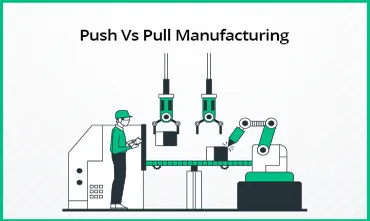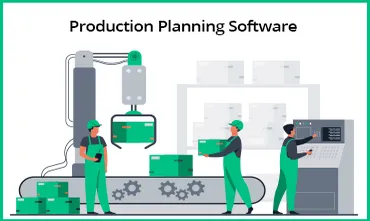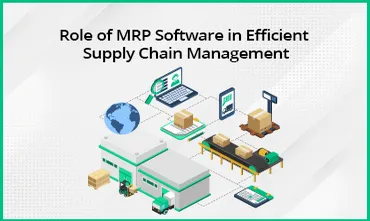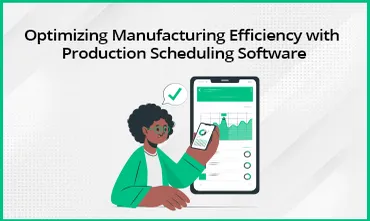Good manufacturing practices or GMP facilitate a good and healthy atmosphere at manufacturing sites. Practices such as daily evaluation and checking of equipment minimize the chances of equipment cross-contamination and reduce incidents of mishaps at the site.
By gaining a good amount of knowledge and understanding of GMP, you can increase your profits and scale your business as a renowned brand. Let's see popular good manufacturing practices rules, benefits of good manufacturing practices, GMP components, regulations, and more in this detailed blog.
What Are Good Manufacturing Practices (GMP)?
Good manufacturing practices refer to processes using which safety and constant production are ensured in sectors such as medical products, cosmetics, and food manufacturing. Good manufacturing practices (GMP) consist of proper procedure, process, and documentation to derive consistent standards for the products.
Implanting GMP enables you to ultimately deliver only standard, and quality products to your consumers. It also provides comprehensive guidelines to all the workers and makes sure that they understand and follow the guidelines strictly. Also, as all the products at all stages are properly tested, good manufacturing practices enable your business to make the products more transparent to your consumers.
Difference Between GMP and cGMP
GMP refers to Good Manufacturing Practices, while cGMP is short for Current Good Manufacturing Practices. If you are a manufacturer who wants to apply cGMP, you must know that it requires up-to-date systems and technologies. cGMP regulations must be flexible to allow manufacturers to implement them in their own way to achieve the best results.
Although GMP and cGMP sound quite similar, there is a fundamental difference between the two. The GMP process ensures that products are manufactured effectively and safely. On the other hand, cGMP is essential to ensure that GMP regulations are implemented correctly.
By using up-to-date technologies, cGMP brings the best out of GMP, and it also continuously helps with continuous improvement during the manufacturing process.
5 Good Manufacturing Practices Principles
The manufacturing industry must comply with good manufacturing practices in the workplace to ensure the safety and quality of manufactured products. Let's explore the main GMP principles.
Personnel
All personnel involved in the GMP process must be qualified and trained. They should not only be trained at the beginning, but they also need to undergo constant evaluation throughout the manufacturing process. Personnel should be competent in equipment handling, hygiene maintenance, safety protocols, and daily reporting.
The manufacturing department's personnel should be able to verify the accuracy of documents and follow guidelines and regulations. If any deviation from the quality or required task occurs, personnel should immediately inform management.
Facilities and Equipment
All equipment and facilities designed for GMP must be safe, and the quality of the products depends on the equipment used. Thus, quality should also be a priority when designing these facilities. Equipment should be placed in a location where the chances of contamination are zero.
Proper lighting, ventilation, storage, and space are also essential aspects of any manufacturing business. To ensure that equipment is working correctly, one must validate the equipment regularly. Facilities must be cleaned and sanitized regularly to prevent contamination and the formation of microbes that can harm the products.
Raw Material
Raw materials are a critical part of the entire manufacturing process. Before using raw materials for manufacturing, their quality must be checked, and the sources must be documented. Raw materials must be tested and stored in specific places to avoid contamination, which can degrade the quality of the final product. Raw material testing should include physical and chemical analysis, and the place must be clean, dry, and free from contamination.
Manufacturing Process
Before starting the manufacturing process, the procedure must be well-validated and defined, and the process should be documented. The product in the process should undergo constant quality checking to ensure that quality is maintained at every step, resulting in a quality end product.
The process should be monitored constantly, and any deviation from the steps must be reported and documented. Immediate reporting of deviations allows for investigation and rectification of issues.
Quality Control
Quality control is critical in running a pharmaceutical, food, or cosmetics business. Deviating from quality guidelines can have serious consequences. Therefore, as a business owner, you must always follow the guidelines to produce the best quality products. Quality control can also help the manufacturing department avoid potential hazards.
Components of Good Manufacturing Practices
The implementation of Good Manufacturing Practices (GMP) involves following five key components also known as the '5 Ps' that maintain high product standards throughout the entire production process. Let's take a closer look at these components.
People
Training is a crucial part of good manufacturing practices standards, as it ensures that every person working in the manufacturing department understands their role and responsibilities. Periodic assessments help evaluate their performance, increase their competency and efficiency, and ensure that everyone follows the manufacturing process regulations strictly.
Products
Quality control is essential to ensure that the products meet the required standards before they reach the consumers. Testing processes at every level, from raw materials to finished products, are necessary to maintain quality. Every phase of the production process must have clear material specifications, and samples must be tested before packing.
Procedures
Consistency is key when it comes to following GMP guidelines, and procedures ensure that consistent results are obtained during the manufacturing process. All employees must strictly follow the regulations, and any deviation must be immediately reported to the higher authorities for investigation.
Processes
The manufacturing process must be divided into layers to ensure the best and most consistent quality products. Proper documentation of the process in an easy-to-understand language is important. Regular evaluations of the manufacturing process can help increase productivity and maintain quality.
Premises
The premises play an important role in ensuring the safety of the manufacturing process. Equipment must be checked regularly to ensure they are still eligible for use, and proper calibration is necessary for consistent results. To avoid cross-contamination, the premises must be well-maintained and kept clean. Ensuring safety is in the best interest of the employees and the final product.
GMP Regulations
GMP regulations are an essential checkpoint to ensure the quality and safety of products. They cover crucial aspects such as production, verification, and validation, and help to ensure consistent and effective market distribution. Regular inspections are conducted to identify possible violations, making it crucial for manufacturers to adhere to GMP guidelines.
GMP regulations also play a significant role in eliminating potential health risks for consumers. Manufacturers need to monitor critical points such as hygiene, temperature control, and the possibility of contamination or adulteration throughout the pre-and post-manufacturing processes. Failing to comply with the guidelines can have serious consequences.
Adhering to GMP regulations brings many benefits to the manufacturing process. It sets a standard for the products and increases transparency. By closely investigating every step, there is a negligible chance of product contamination or deterioration in quality.
GMP Standards
The primary objective of the GMP process is to guarantee the safety and quality of products. It is designed to produce only the highest quality products, benefiting consumers and establishing a good reputation for the company.
Following GMP standards not only benefits the company's reputation but also ensures the safety of its employees. Additionally, GMP standards help with recalling a batch if any adverse effects are observed from using a specific product. To follow GMP standards, adhere to the following points:
- Good Team: It is essential to build a team of competent workers who are qualified to be trained and understand the rules and regulations. All employees must adhere to good manufacturing practices at all stages of the manufacturing procedure.
- Validation: Regularly used instruments, activities, and procedures must be documented for validation purposes. This step is crucial to ensure that everything occurs in the correct order. Validation should be conducted on analytical methods, processes, sanitization, and cleaning.
- Sudden Audits: Sudden audits are necessary to ensure product quality. Unannounced visits can determine whether everything is progressing accurately. If any non-compliance is observed in the manufacturing facility, it is crucial to identify the root cause and take appropriate action.
- Compliance Training: Prior to starting the procedure, provide compliance training to all employees. Each employee should receive training and possess documents that outline the process in clear language.
GMP Manual and Its Basic Concepts
The GMP process entails following a set of rules during the manufacturing procedure rather than simply dictating how to produce desired products. Multiple methods can be employed to obtain the desired outcome through GMP, and the choice lies with the company owners.
Adhering to GMP enhances the quality of manufactured products. Here is a basic guide to the GMP manual and its concepts:
- Ensure Quality: While producing or distributing manufactured products, ensure that there is no reduction in quality.
- Maintain Hygiene: Manufacturing premises must be hygienic and maintained according to strict GMP regulations. Hygiene must also be maintained in the laboratory and storage areas.
- Avoid Cross-Contamination: Cross-contamination can be problematic in pharmaceutical, food, and cosmetic companies' manufacturing departments. Therefore, extra precautions must be taken to avoid cross-contamination in the manufacturing area. Labeled and unlabeled products and materials must be protected from cross-contamination.
- **Follow Process: **The entire manufacturing process is crucial to consistently producing high-quality products. Therefore, all employees must understand the process, which must be defined, validated, and controlled. The procedure's language and instructions must be clear, and workers must be trained to handle equipment and follow approved procedures.
- Maintain Thorough Reports: A thorough report of the entire manufacturing procedure and quality control must be maintained. The report must include all necessary steps for production, whether the steps are followed strictly, and any disruptions or deviations that must be reported and recorded promptly.
- Track Product Lifecycle: Properly following the procedure ensures control over the product lifecycle management and can facilitate constant improvement. Everything from manufacturing to batch distribution must be recorded so that the batch's history is always accessible.
- Implement Recall System: A system must be in place to recall any specific batch from sale in the market.
- **Thoroughly Examine Complaints: **Any complaints about marketed products must undergo a thorough examination to detect defects. Inappropriate measurement of any ingredient can also make the product problematic.
Compliance With Good Manufacturing Practices Rules
Following the GMP process addresses various issues that could impact the quality of your products. GMP ensures the safety of products and workers, reduces monetary losses, and increases customer satisfaction. It also ensures a better return on your investment in the business.
Assessing the compliance of your company can be achieved by following GMP audits. Continuous monitoring reduces the chances of any kind of adulteration. Here are some other benefits:
- System control for quality
- Customer service
- Manufacturing support
- Material management
- Building facilities
- GMP training for personnel
- Quality management systems
- Identification, labeling, and packaging
Adhering to GMP rules ensures that your company is producing safe and high-quality products. It also helps build trust and credibility with customers and regulatory agencies.
Use GMP to Get the Best Quality Outcomes
The benefits of good manufacturing practices are countless. This is why GMP rules, principles, and guidelines are a must for every manufacturing unit that desires to excel and grow. The components of good manufacturing practices contribute in many ways to producing quality products. They also help in building good customer-seller relationships.
The safety of the workers, their training, and strict compliance is also ensured by having a proper system in place. Not just quality control and safety, GMP practices and rules also focus on the storage of raw materials, upkeep of the facility, validation of equipment, documentation of procedures, monitoring of the production process, proper packaging and labeling of products, system to address complaints, keeping records of manufacturing, testing and product distribution.
TranZact is an expert business automation software that supports your business to digitize core operations and comply with good manufacturing practices. It enhances record-keeping, production testing, and quality control at every stage of manufacturing!
FAQs on Good Manufacturing Practices
1. Who needs to follow GMPs?
GMPs or good manufacturing practices are required for industries that produce food, drugs, and medical devices. Any company that is involved in the manufacturing, processing, packaging, or storage of these products must follow GMPs.
2. What are some common violations of GMPs?
Some common violations of GMPs include failure to maintain adequate documentation, inadequate employee training, inadequate cleaning and sanitation procedures, and failure to perform proper quality control testing.
3. What is the role of employees in maintaining GMP compliance?
Employees play a critical role in maintaining GMP compliance. They must be properly trained in GMP guidelines and procedures, and they must follow these guidelines and procedures consistently to ensure product quality and safety.












